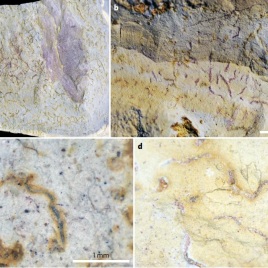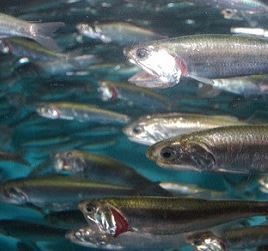Scientists have long questioned whether there is any correlation between brain size and cognitive ability in various animal species. One theory often explored in this field is the cognitive buffer hypothesis, which explains bigger brain size by the adaptive benefits to respond quickly to sudden, rapid changes in the environment. A new study tests out […]
Organ donations in Ontario increased significantly over past 10 years after policy change 
Organ donations have increased by 57% in Ontario after a new donation policy was implemented in 2006. The new policy allowed for donation of organs after circulatory determination of death (DCD), replacing the old rule that called for donations only after neurologic determination of death, or brain death, has been established. DCD donations have expanded […]
Newly discovered molecule can give HIV/AIDS a kick in the gut 
Researchers have identified a molecule inside the gut flora that can help block the replication of HIV and prevent chronic illnesses associated with the virus. Existing antiretroviral (ART) therapies can significantly decrease viral loads, which is effective in preventing evolution of the infection towards Acquired Immunodeficiency Syndrome (AIDS). But HIV is more difficult to target, […]

Your self-control doesn’t get worse later in the day 
As the day goes on, our self-control wears off – according to one of the theories of cognitive function. But new research challenges this view, proposing that self-control is not dependent on the time of day. To investigate this, researchers observed two groups of students over separate 17-week intervals with 24-hour coverage, as they engaged […]
A step towards more secure and cost-effective quantum technology 
A new study demonstrates a quantum communication system that can deliver secure transmissions in faster and more secure ways. In quantum cryptography, unconditional security—where security of a transmitted message is not dependent on the device that interprets this message—presents a puzzle to scientists whose aim is to design a safe quantum key distribution (QKD) system. In the […]
Child deaths significantly reduced in India since 2005 
One million child deaths have been avoided in India from 2005-2015, but that number could have been three times greater if proper national child health programs were in place, according to a new study. The reduction is driven by significant drops in mortality from pneumonia, diarrhea, tetanus and measles. The study found a 3.3% annual […]
Greenhouse emissions have to be continuously reduced to meet Paris Agreement goals 
In order to limit the amount of global warming by 2020 to only 1.5 degrees Celsius, countries under the Paris Agreement may have to strengthen their carbon reduction pledges, a new study suggests. Researchers assessed remaining carbon budgets that are compatible with limiting warming to 1.5 °C by using a simple carbon-climate model, key properties […]
Risk of dying three times higher for schizophrenia patients than general population 
An overview of 1.6 million deaths in Ontario over a 20-year period revealed that people with schizophrenia are three times more likely to die—and die younger—than the general population. New research revealed that the most vulnerable schizophrenia patients are female, younger and living in lower-income neighbourhoods. While the average life expectancy for people with schizophrenia […]
First-ever genome-editing study on human embryos sheds light on early human development
New research describes how CRISPR-Cas9 genome editing technique has been used to study the role of the OCT4 gene, thought to be required for pluripotency and reprogramming in human cells, in human embryos. The molecular mechanism of this early developmental period is poorly understood, so a successful technique to study this represents proof of concept […]

Pre-Cambrian Explosion trace fossils offer a new window into Earth’s oldest lifeforms 
According to the fossil records, nearly all animal phyla appeared within a relatively short timespan, dubbed the Cambrian Explosion due to its brevity and significance. But a recent study is contributing to another narrative, one that suggests the “explosion” wasn’t as sudden as scientists first thought, and that favourable circumstances had been lining up since the preceding […]
Attacking cancer cells by cutting off their sugar supply 
Cancer cells, unlike healthy ones, use a fermentation process to break down sugar to create energy. This metabolic process is much less efficient and uses a lot more sugar than the oxygen conversion of healthy cells, and it’s known to cancer researchers as the Warburg effect. A recent study describes the mechanism behind this effect, and […]
Paper-based test for tuberculosis a potential low-cost solution for developing countries
Researchers have developed a fast, cost-efficient tuberculosis test that can be read using a smartphone. The team combined gold nanoparticles with fluorescent single-stranded DNA sequences that bind to the genetic material of TB-causing bacteria, Mycobacterium tuberculosis. These nanoparticles were then incorporated into a paper-based device. If the smallest amount of M. tuberculosis is detected on the device, the […]
The dynamics of food webs 
New research proposes a model to explain how simple food webs are formed within a community. A food web links each species with its predators and prey, but it’s not clear how any particular association emerges from a wide range of possible webs. In the present study, researchers describe a principle of mutual replenishment, which […]
A gene that makes ants better plant bodyguards 
Amazonian ants Allomerus octoarticulatus act as bodyguards, defending the Cordia nodosa plant against herbivores—such as grasshoppers—in a mutualistic relationship. A recent study pinpoints a genetic variation among A. octoarticulatus that makes some of the ants better bodyguards: a certain foraging gene makes the ants better at discovering the grasshoppers attempting to feed on the plant. Researchers studied two ant colonies, one of which […]

Understanding the role of phosphorus in Canadian freshwater algal bloom 
Numerous bodies of water in Canada are affected by algal bloom, which occurs when the water is saturated with excess nutrients. New research examines the process through which one such nutrient, phosphorus, is recycled between mud on the lake bottom and water surface. Study authors reviewed data from 70 water bodies in Canada, including Lake Simcoe, […]

Evidence of first vertebrate with polarized vision 
Most invertebrates can detect polarization of light in addition to color and intensity, which helps with target detection, orientation and communication. But a recent study found evidence of the first vertebrate that possesses polarization vision: the northern anchovy. Optic nerve recordings from anchovies have shown that the fish’s eyes show retinal segregation for independent colour […]
